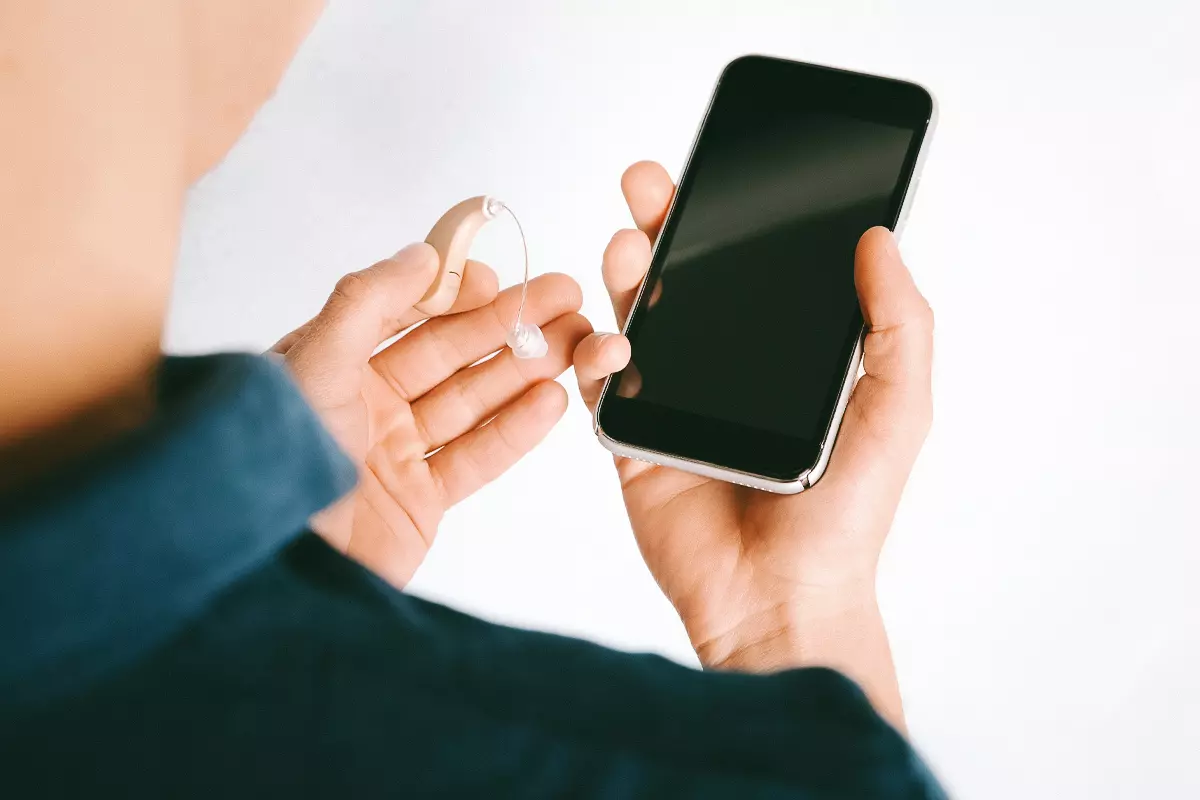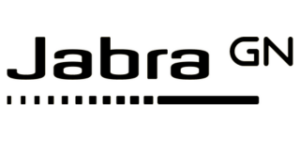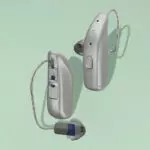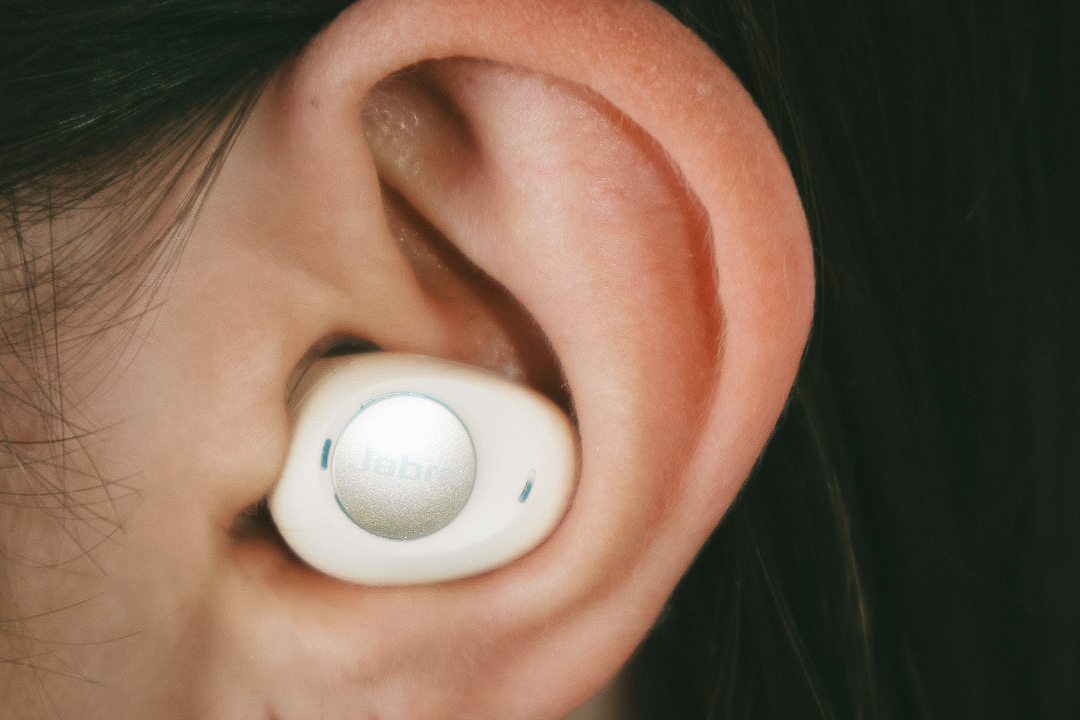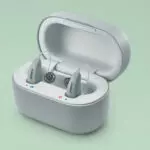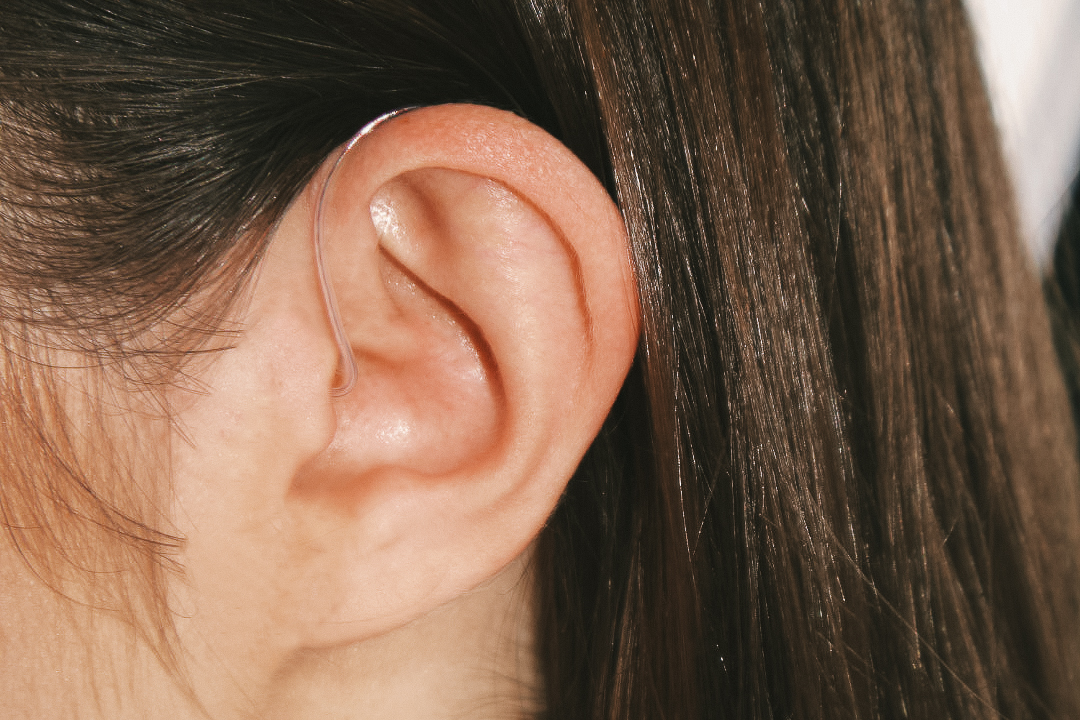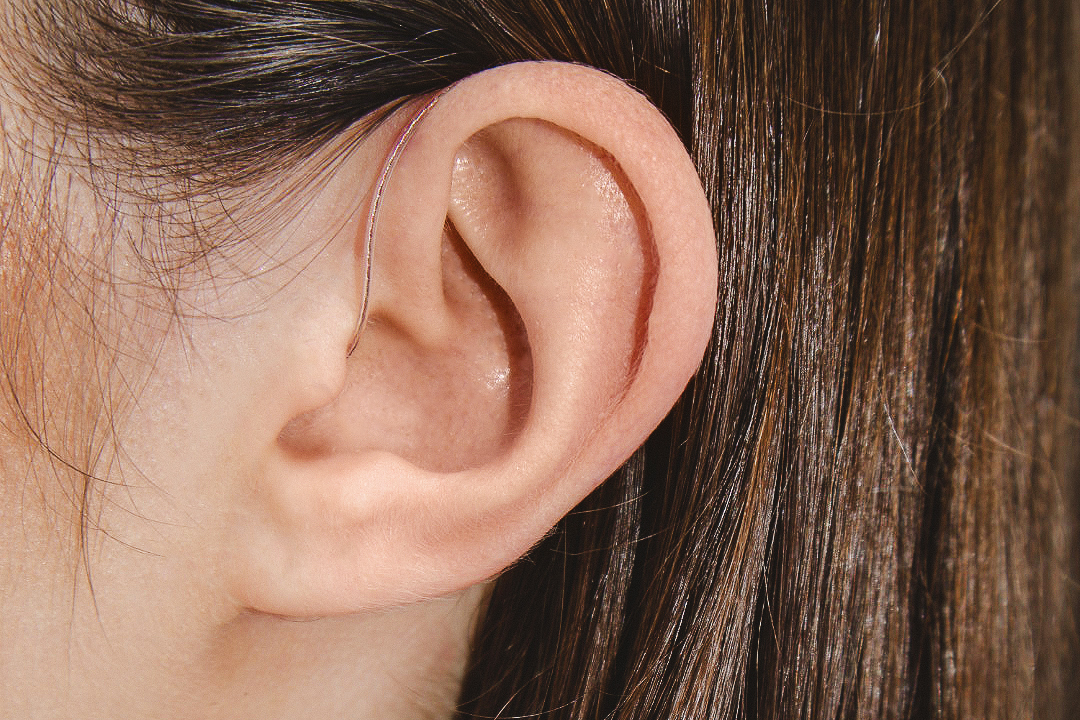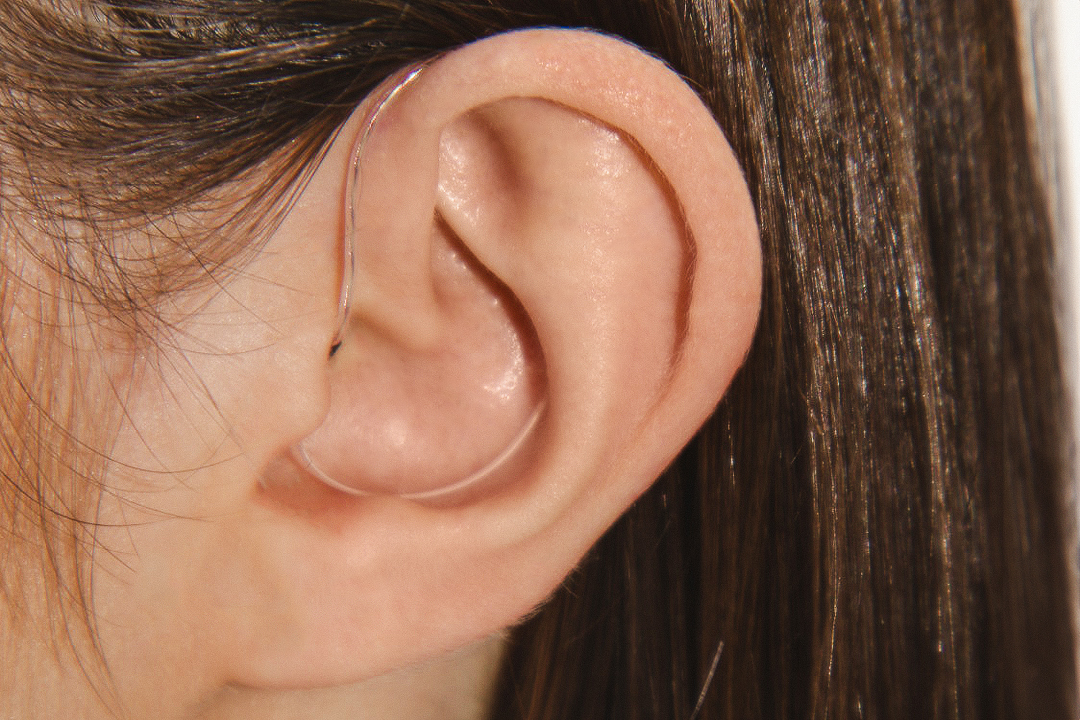Table of Contents
- Hearing aids with Bluetooth help improve functionality, making it possible for people with hearing loss to listen to music or take phone calls directly from their hearing devices.
- Bluetooth hearing device prices can range from $799 to $2,475 per pair.
- We evaluated several key features to ensure a high-quality Bluetooth hearing aids experience, including: ease of pairing, sound quality for calls and music, battery life, app functionality, and Bluetooth compatibility.
Hearing aids with Bluetooth streaming open up a world of functionality for people with hearing loss. Millions of people use Bluetooth earbuds for listening to music or taking phone calls. Hearing aids also offer this technology, but they often have better sound quality along with amplification tailored to your hearing loss.
Unfortunately, hearing loss can lead to depression and social isolation. But Bluetooth hearing aids are uniquely suited to help people maintain connections with others and improve quality of life. Bluetooth hearing aids are also more convenient, as they let you stream audio from music, shows, and phone calls directly to your hearing aids.
Bluetooth technology transforms hearing aids into personalized wireless headsets, tailoring sound to individual hearing needs. This enhancement provides a crucial boost in speech clarity during phone conversations, ultimately deepening and enriching social connections for users.
Rebecca Lewis, chief of audiology at the University of California San Francisco Health
Bluetooth hearing aids come in a wide range of prices and with various styles and features. It’s great to have options, but more choices can make it hard to know which device is optimal for your hearing needs. We tested 14 Bluetooth hearing aids to help you choose the best device for you.
Which Bluetooth hearing aid is right for you?
Jabra Enhance: Best OTC hearing aid with Bluetooth.
Lexie: Best value.
Phonak: Best sound quality.
Starkey Genesis AI: Best lifestyle hearing aid.
What you need to know about our hearing aid research and testing
Here are the five most important things to know about Bluetooth hearing aids.
Compare Bluetooth hearing aids
| Price per pair | $799–$1,995 | $799–$999 | $2,475–$5,445* | $2,365–$5,945* |
| Bluetooth compatibility** | iOS, Android | iOS, Android | iOS, Android, Universal Streaming | iOS, Android |
| Hearing aid type | In-the-ear, receiver-in-canal | Behind-the-ear | Behind-the-ear, receiver-in-canal | Receiver-in-canal, in-the-ear, in-the-canal, completely-in-canal, invisible-in-canal |
| Setting Adjustments | Smartphone App | Smartphone App | Remote control, Smartphone App | Remote control, Smartphone App |
| Degree of hearing loss | Mild to moderate | Mild to moderate | Mild to profound | Mild to severe |
| Battery type | Rechargeable | Disposable, rechargeable | Disposable, rechargeable | Rechargeable |
*Prescription hearing aid prices can vary based on the retailer.
** Bluetooth hearing aids connectivity may vary by device.
Bluetooth hearing aid reviews
What are Bluetooth hearing aids?
Bluetooth hearing aids connect with other electronic devices, such as tablets, smartphones, and computers using Bluetooth technology. This feature allows users to stream audio to their hearing aids.
Bluetooth hearing aids are not just about amplifying sound; they offer convenience and versatility by enabling hands-free communication, seamless integration with technology, and discreet use.
By incorporating Bluetooth connectivity into hearing aids, the devices can enhance social interactions, boost productivity, and promote independence for users in various settings, including crowded environments and noisy workplaces.
Pros and cons of Bluetooth hearing aids
Bluetooth hearing aids open up a world of possibilities when it comes to controlling your devices with an app and listening to music, shows, and phone calls through your hearing aids.
Streaming phone calls and media to hearing aids via Bluetooth significantly enhances auditory experiences by allowing users to utilize both ears together, supporting improved speech understanding and reduced listening effort through the benefits of binaural hearing. Additionally, some hearing aids even feature the ability to reduce environmental background noise, further improving focus during your most important phone conversations.
Rebecca Lewis, chief of audiology at the University of California San Francisco Health
What we like about Bluetooth hearing aids
- Increased functionality allows hearing aids to act as wireless earbuds.
- Bluetooth LE, available in most newer hearing aids, uses less energy than traditional Bluetooth technology.
- Bluetooth hearing aids come in a wide variety of styles and price ranges.
What we don’t like about Bluetooth hearing aids
- Bluetooth usage shortens battery life.
- It can take multiple attempts to connect Bluetooth hearing aids to the app.
- Bluetooth hearing aids tend to cost more than hearing aids without Bluetooth.
Key features to look for in a Bluetooth hearing aid
When shopping for a hearing aid with Bluetooth, look for the following key features:
- Audio-streaming, hands-free calling, and an app for making adjustments.
- Excellent sound quality.
- Reliable customer service.
- The battery type you want: disposable or rechargeable.
Bluetooth hearing aid costs
The cost of Bluetooth hearing aids has come down quite a bit over the past year. The least expensive hearing aids we’ve found with Bluetooth streaming are from Go Hearing, which is made by HearX, the same manufacturer that makes Lexie hearing aids. The Go Ultra model from Go Hearing includes Bluetooth streaming and is priced at $499 per pair, roughly half the cost of Bluetooth hearing aids from Lexie or Jabra Enhance.
All prescription hearing aids come standard with Bluetooth streaming, and they start at around $1,600 per pair. That cost can rise upwards of $8,000 depending on your degree of hearing loss and the level of sound technology you need and want in a hearing aid.
Our final verdict
Hearing aids with Bluetooth connectivity and streaming can be a game changer for people with hearing loss. This feature allows you to adjust your hearing aid settings with your phone, so you can do so discreetly and easily. You can also get remote assistance from your audiologist through the app and, of course, stream music, shows, and phone calls.
For all these reasons, we’ve been excited to see a variety of Bluetooth hearing aids enter the market over the past few years. Among OTC brands, we like Jabra Enhance and Lexie for their quality, comprehensive remote support, and value. Our two favorite prescription brands are the Phonak Lumity line and Starkey Genesis AI for their outstanding sound quality, high customization capabilities, and robust apps with lifestyle features like activity tracking and fall detection.
Read our full lineup of the best hearing aids of 2024 to find even more hearing aid options.
Frequently asked questions
Some Bluetooth hearing aids are covered by health insurance, but it depends on the brand of hearing aid and your insurance plan. Contact your insurance provider to find out if you have hearing coverage, and if so, which hearing aid brands are covered.
Prescription Bluetooth hearing aids like those from Phonak and Starkey are available for purchase from hearing clinics, where an audiologist or hearing instrument specialist will conduct a hearing exam and then program your new hearing aids to match your hearing loss profile.
OTC hearing aids, like Jabra Enhance and Lexie, can be purchased online. You’ll take an online hearing test with Jabra or use the app with Lexie hearing aids to take a quick hearing screen. Jabra’s audiology team will program your hearing aids before sending them to you, and Lexie hearing aids are self-fitting, which means they automatically adjust to your hearing screen results using the app.
Some OTC hearing aids, such as Sony, GoHearing, and Eargo, can be purchased online and in retail stores.
Anyone who wants to stream audio, TV shows, or phone calls may enjoy using Bluetooth-enabled hearing aids.
Bluetooth hearing aids can cost anywhere from $299 to upwards of $8,000 per pair. Cost is greatly influenced by the level of technology and power included in the hearing aid.
- Bigelow, R. T., Reed, N. S., Brewster, K. K., Huang, A., Rebok, G., Rutherford, B. R., & Lin, F. R. (2020). Association of hearing loss with psychological distress and utilization of mental health services among adults in the United States. JAMA Network Open, 3(7). Link
- Depression and hearing loss. American Academy of Audiology. (2022, May 27). Link
- Lin, F. R., Pike, J. R., Albert, M. S., Arnold, M., Burgard, S., Chisolm, T., Couper, D., Deal, J. A., Goman, A. M., Glynn, N. W., Gmelin, T., Gravens-Mueller, L., Hayden, K. M., Huang, A. R., Knopman, D., Mitchell, C. M., Mosley, T., Pankow, J. S., Reed, N. S., … Coresh, J. (2023). Hearing intervention versus health education control to reduce cognitive decline in older adults with hearing loss in the USA (achieve): A Multicentre, randomized controlled trial. The Lancet, 402(10404), 786–797. Link
- Hearing Aid Users Survey. 600 respondents. Conducted using Pollfish. Launched August 2023.




